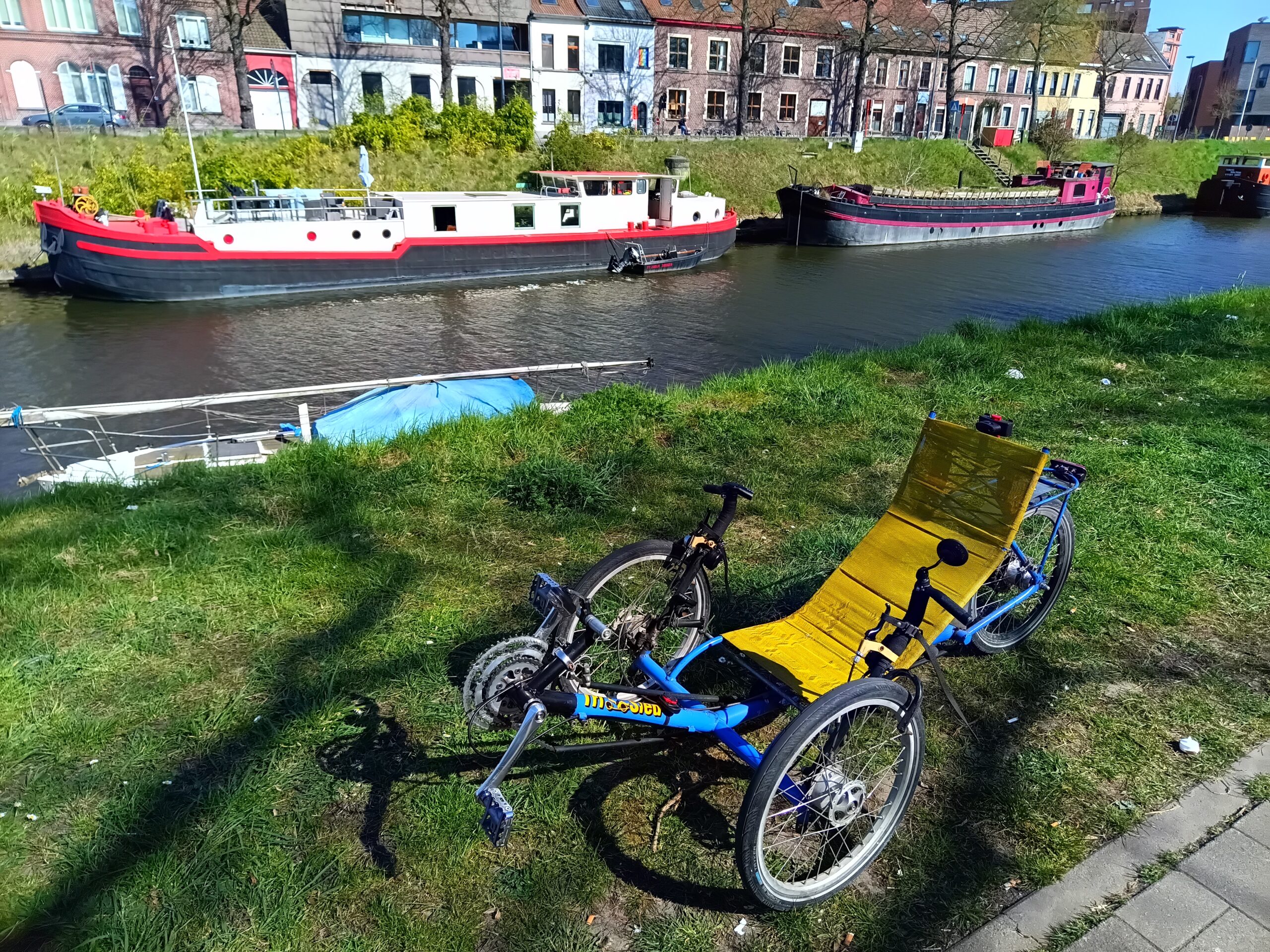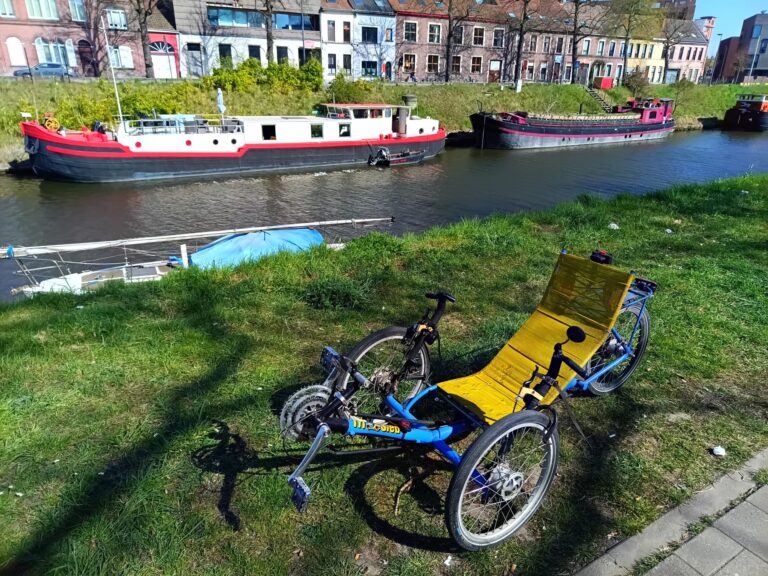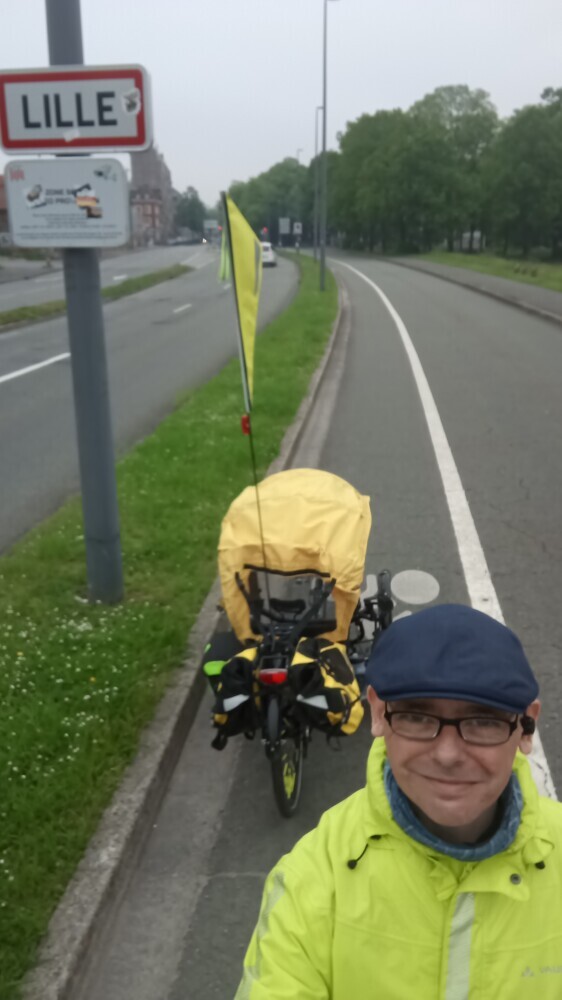🚴 Discover Belgium’s LF-Routes By Recumbent Trike: Scenic (s)miles For The Soul 🚴
🌱 Belgium’s LF-routes (Langeafstand Fietsroutes) are a hidden gem for long-distance cyclists—and a dream come true for recumbent trike adventurers. Whether you’re chasing breathtaking views, quiet backroads, or an epic connection to neighboring countries, these routes promise unforgettable (s)miles filled with nature, culture, and comfort. In this guide, we’ll explore what makes LF-routes special, how to prepare for them on a recumbent trike, and why they’re ideal for multi-day journeys. Get ready to unlock a new dimension of trike touring—where the ride is as enriching as the destination.
🗂️ What Are LF-Routes?
LF-routes are long-distance cycling routes crossing entire regions and sometimes international borders. Managed and promoted by organizations like Fietsplatform (NL) and Grote Routepaden (BE), they are well-signposted, GPS-mapped, and typically run on bike-friendly paths, quiet roads, and canal-side trails.
LF stands for Langeafstand Fietsroutes, or Long Distance Cycling Routes. While the network used to be larger, it has been partially replaced by the numbered node system in Belgium and the Netherlands. However, many LF-routes have been upgraded into themed icon routes or repurposed for multi-day touring with integrated services for cyclists.
LF-routes still offer unparalleled scenic value, traffic-safety, and ease of navigation—making them perfect for recumbent trikers who prefer uninterrupted rides and clear signage.
Popular LF-routes in Belgium include:
🚴 LF1 North Sea Route – A coastal adventure hugging the North Sea, offering salty breezes, beach views, and endless skies.
🚴 LF2 Cities Route – Linking major Belgian cities, this route blends urban energy with scenic green corridors.
🚴 LF5 Flanders Route – A cultural loop through the heart of Flanders, connecting charming towns, heritage sites, and rolling countryside.
🚴 LF6 Kempen Route – A peaceful ride through forested trails and sandy heathlands in the northeastern Kempen region.
🚴 LF7 Oosterlijn – An east-west connection stretching from the coast to the Limburg hills, perfect for crossing the country from one side to the other.
🚴 LF13 Schelde-Rhine Route – Following the scenic riverbanks of the Scheldt and Rhine, ideal for tranquil, meditative cycling.
🚴 LF30 Haspengouw Route – Cycling through orchards and blooming landscapes in the fruit region of Haspengouw.
🚴 LF38 Dender-Waasland Route – A gentle route that weaves through the Dender Valley and rural Waasland.
🚴 LF50 to the RAVeL in Wallonia – This scenic path transitions into Wallonia’s vast RAVeL network, unlocking new landscapes and French-speaking charm.
🚴 LF51 Kempen Route – Exploring even deeper into the Kempen region, this route offers long forest passages and peaceful isolation.
🔗 Learn more from Grote Routepaden
🔧 Practical Tips for Riding LF-Routes on a Trike
LF-routes are well-suited to trike touring thanks to their smooth surfaces, limited traffic, and excellent signage. Still, a little preparation goes a long way:
🛤️ Surface Quality: Most LF-routes are paved or hard-packed gravel—perfect for narrow recumbent tires. I recommend fitting Schwalbe Marathon Plus tires for maximum puncture protection. Still, it’s wise to carry a puncture repair kit, just in case.
🎒 Packing Smart: Many LF-routes pass through small towns every 20–30 km (12–18 (s)miles), allowing you to restock on food and water without heavy loads.
🧭 Navigation Tools: While signage is excellent, always carry a GPS device or smartphone with apps like Komoot or OsmAnd. Consider installing a handlebar phone mount.
⛺ Overnight Stays: Bring a lightweight tent or check Bivakzone.be for free wild camping spots. Alternatively, use WelcomeToMyGarden.org or CampSpace.com for garden camping offered by locals.
🪑 Trike Access: Watch for narrow gates or barriers designed for upright bikes—especially in Flanders. Consider contacting local cycling forums to check for recent updates.
💡 Important Considerations Before You Go
Before heading out, consider these key points:
1. Route Maintenance: Some older LF-routes might have faded signage or path disruptions due to construction. Cross-check routes with recent GPX files.
2. International Routes: Many LF-routes connect with Dutch, French, or German cycling networks. Border crossings are seamless, but be mindful of differing signage and camping regulations.
3. Trike Visibility: Use a bright safety flag and flashing rear light—especially in wooded or rural areas where visibility drops.
4. Seasonal Adjustments: Spring and early autumn offer the best conditions. Summer can be busy with holiday cyclists, while winter may pose challenges due to slippery surfaces and reduced daylight.
5. Route Compatibility: Some LF-routes have been integrated into the Icoonroutes (like LF1 into the Kustroute). Make sure you know which version you’re riding.
🗂️ Advanced Insights for Trike Explorers
Want to elevate your experience? Here’s how to turn a simple LF-route into a journey you’ll never forget:
🌀 Combine with Node Points: Use the numbered junction system (knooppunten) to create custom detours or loops.
🎥 Capture the Ride: Bring a GoPro or DJI action camera and document your journey. Create your own vlog or photo diary to inspire others.
🛎️ Supportive Stops: Choose routes that pass through cycling-friendly towns. Many cafés and B&Bs offer secure bike parking, charging stations, and cyclist discounts.
🛠️ DIY Maintenance: Carry basic tools—LF-routes are safe, but remote sections may require you to handle minor fixes without nearby help.
🌍 Cultural Add-Ons: Plan breaks around heritage sites, regional foods, or local festivals to deepen your connection to the region.
🚲 Essential Trike Components for LF-Route Success
✅ Lubricants and grease – Reduce friction, prevent rust, and ensure smooth operation
⚙️ Suspension pivots – Ensure correct alignment for a smooth ride
🧩 Chain and gears – Clean, lubricate, and align for optimal performance
🪛 Tire pressure and brakes – Check regularly for efficiency and safety
Frequently Asked Questions
❓ Are LF-routes suitable for beginners?
Yes. Their signage, flat paths, and services make them perfect for cyclists of all levels—including first-time trikers.
❓ Can I sleep along the LF-routes?
Yes! You’ll find a mix of wild camping zones, campsites, and B&Bs. For free options, check platforms like Bivakzone or WelcomeToMyGarden.
❓ How can I plan a loop instead of a one-way ride?
Use the knooppunten (numbered junctions) to link LF-routes into circular tours or custom loops tailored to your timeframe and goals.
📅 Long-Term Strategies for Trike Nomads If you’re building a lifestyle around your trike—LF-routes can become your training ground, your escape route, and even your personal testing lab. Rotate through different LF-routes each season, build up your endurance, and test your gear in real-world conditions. Document your rides, reflect on the journey, and share your experiences with others. Whether it’s through photos, journals, or conversations, these (s)miles can quietly inspire and connect.
For many, this goes far beyond leisure—it’s a lifestyle of freedom, discovery, and self-reliance.
🏁 Final Thoughts LF-routes offer everything a recumbent triker could wish for: scenic views, quiet roads, and the chance to lose yourself in the rhythm of the ride. With thoughtful planning and the right gear, these routes can provide (s)miles of insight, peace, and joy. Ready to explore Belgium one LF-route at a time?
👉 Start with your favorite region, and don’t forget to bring your curiosity.
If you found this guide helpful, we invite you to:
- Subscribe to our newsletter for more trike touring tips
- Check out our favorite gear
- Leave a comment and share your LF-route experiences or questions
See you on the next (s)mile! 🚴♂️💨



